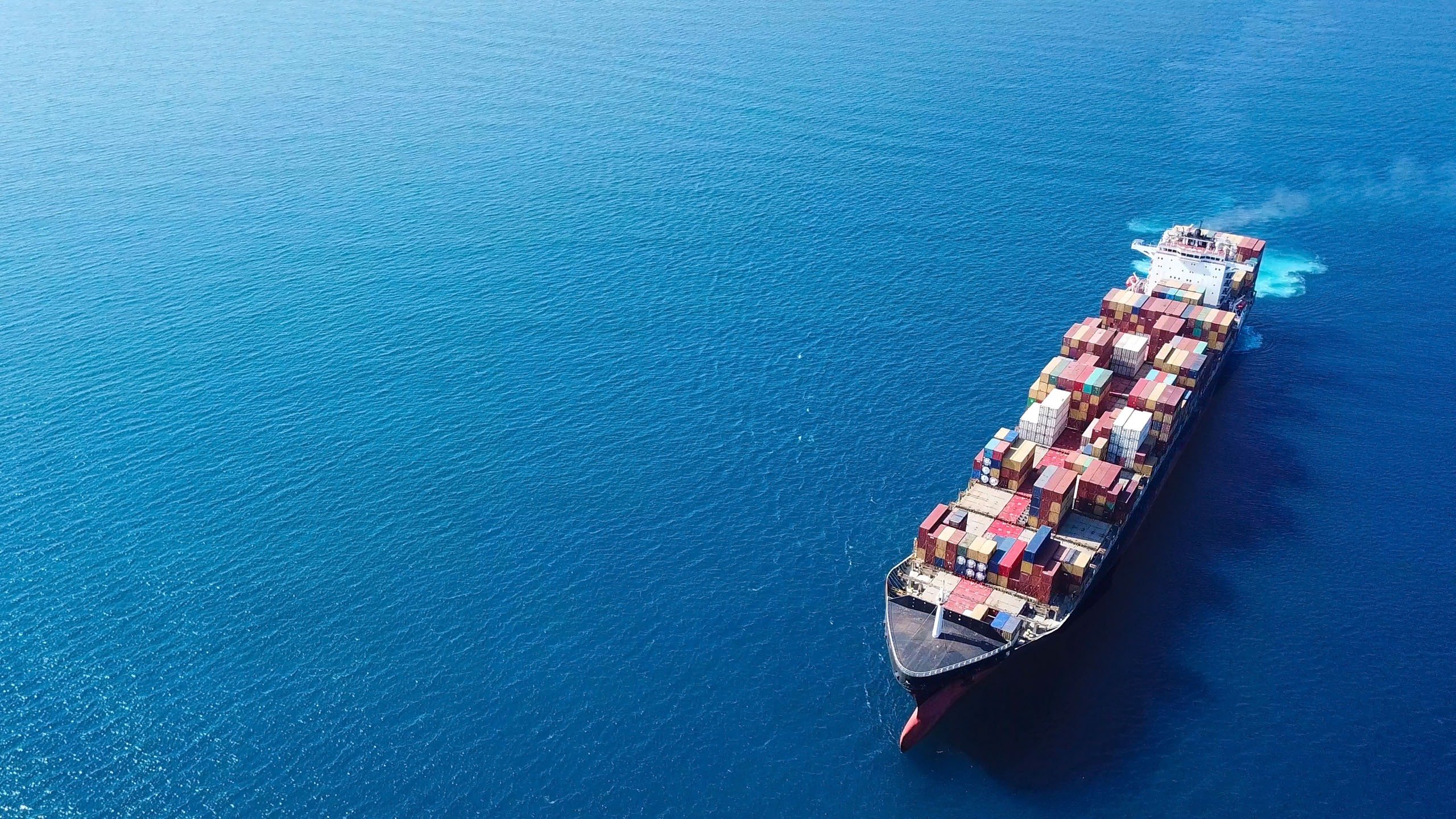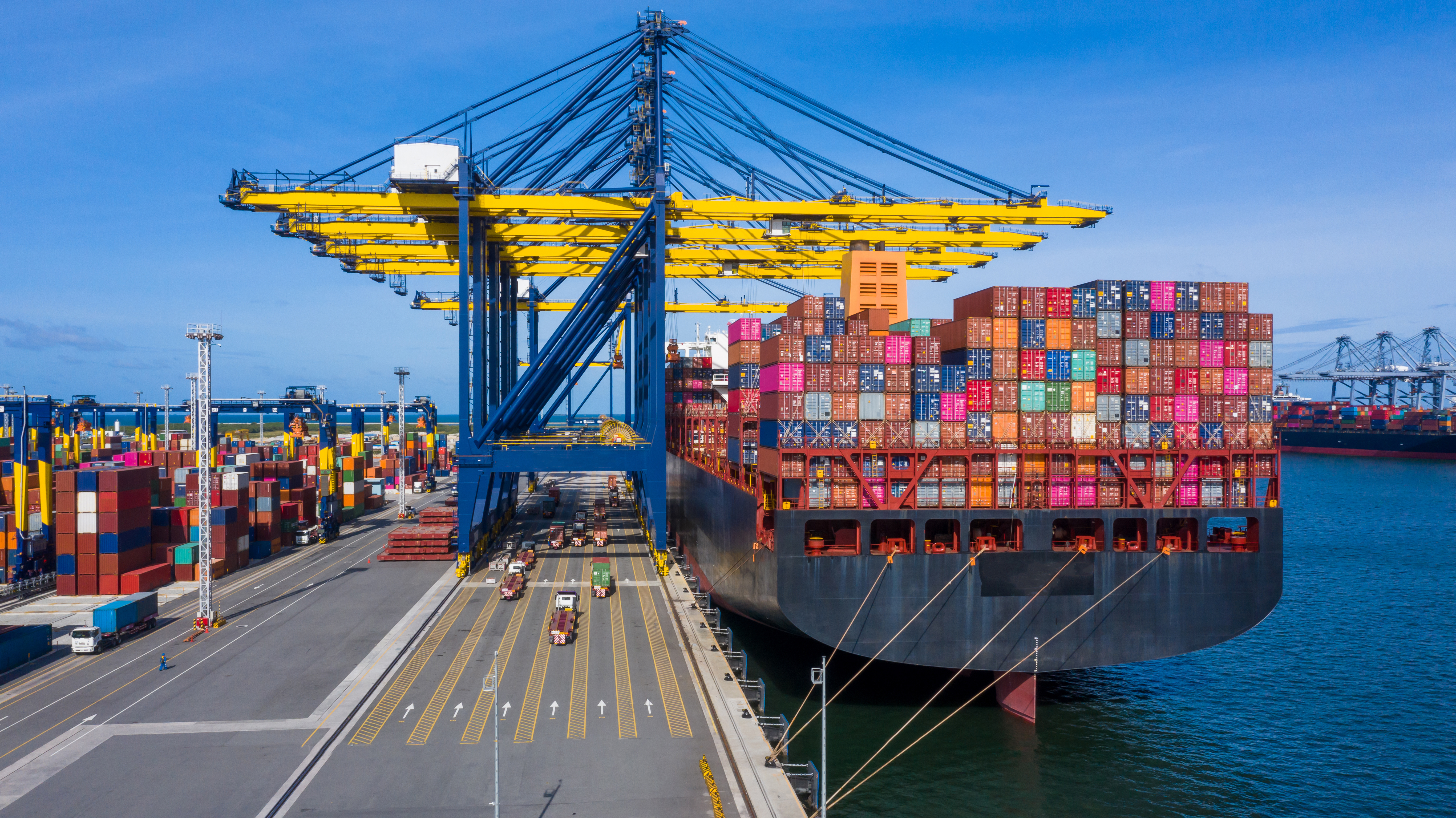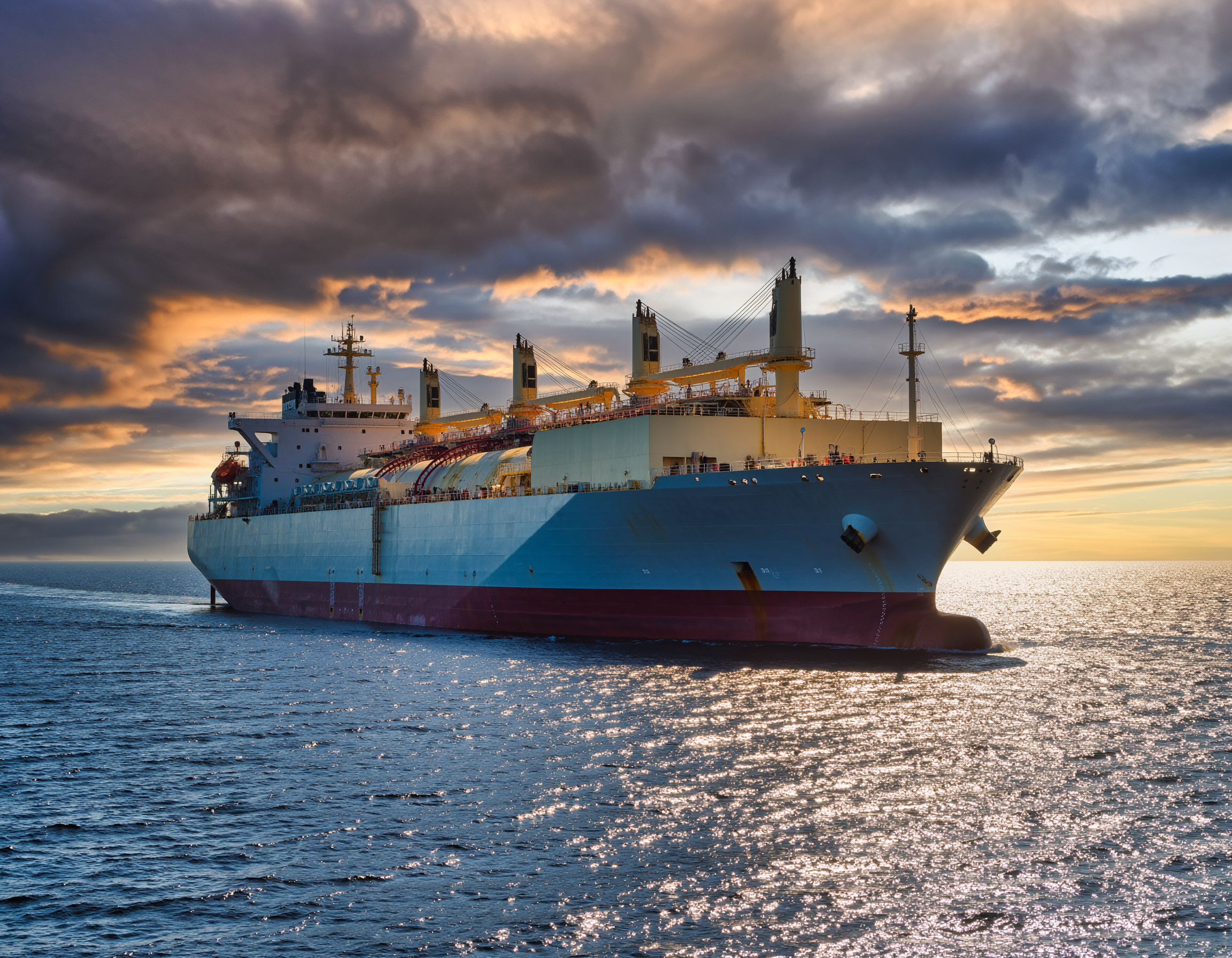
As the maritime industry continues to prioritize the reduction of emissions, biofuels are gaining recognition as a crucial solution in the short and medium term. They present a compelling and increasingly popular option for addressing emissions in the industry and compliance fulfilment. Through sustainable production methods, biofuels can offer a promising pathway to reduce carbon emissions compared to conventional fossil fuels.
Biofuel Source
Biofuels are derived from renewable biomass, offering an alternative to finite and non-renewable fossil fuels like crude oil and natural gas. They can be sourced from various materials, including vegetable oils, animal waste, crop residues, sewage from wastewater treatment, and food waste from industry and households.
Biofuels can be grouped into three categories, each at a different stage of development:
- First-generation or conventional biofuels are already in common use worldwide, and are produced using crops, vegetable oils, or food waste. However, their scalability is limited due to the use of food-based crops, which can lead to direct and indirect changes in land use.
- Second-generation or advanced biofuels are derived from non-food biomass feedstocks like residual materials from forestry or crops. These biofuels have the potential to minimize adverse environmental impacts associated with land use and food production. Their utilization is expected to be crucial in decarbonizing the shipping industry. However, widespread adoption requires substantial investments to increase the supply of these biofuels.
- Third-generation biofuels, produced from algae and microbes, represent a future generation that is still under development, and which requires further advancements before becoming commercially viable.
The production pathways of biofuels are also significant. The method of production and the choice of feedstock play a crucial role in assessing the greenhouse gas (GHG) emissions throughout the biofuel's lifecycle.
Marine Application
When discussing biofuels for marine application, the conversation often revolves around liquid fuels such as biodiesel and renewable diesel. However, it is important to note that biofuels can also be found in gaseous form. This article will focus on the two most common liquid biofuels used in shipping: HVO (hydrotreated vegetable oil) and FAME (fatty acid methyl ester).
HVO, also known as renewable diesel, is produced by subjecting vegetable oils and fats to hydro treatment. This process involves removing oxygen from the raw materials through a chemical reaction using hydrogen, producing renewable diesel. HVO can be obtained in its pure form or blended with other fuels. The European standard EN 15940 outlines the requirements and test methods for HVO, while the ASTM D 975 standard also applies internationally.
FAME, on the other hand, is the most commonly used biofuel in shipping. It can be derived from various sources such as vegetable oils, used cooking oil, or animal fats. The production of FAME involves transesterification, whereby fatty acids are converted into biodiesel through a reaction with methanol in the presence of a catalyst. Like HVO, FAME is available as a pure product or blend, such as B20, which contains 20% FAME mixed with fossil diesel. The European standard EN 14214 provides requirements and test methods for FAME, while the ASTM D6751 and EN 590 standards are applicable internationally.
These liquid biofuels, HVO and FAME, can influence the shipping industry's efforts to adopt more sustainable and low-carbon fuel options. Their production processes and adherence to specific standards will ensure their quality and compatibility for use in marine vessels.
Operational Challenges
Operational challenges can arise when using biofuels, but solutions and preventive measures exist to address them. Here are some key challenges and corresponding recommendations:
Microbial growth: Condensed water in biodiesel fuel can promote the growth of bacteria and mould, leading to sludge formation, clogged filters, and piping issues. To mitigate microbial growth, it is advisable to drain fuel tanks frequently and apply biocides. This helps reduce or prevent microbial contamination.
Oxygen degradation: Biodiesel can degrade over time, resulting in the formation of contaminants and insoluble materials. This can lead to deposits in engines and piping, compromising operational performance. To prevent this, it is recommended to use biofuel within a relatively short period and avoid long-term storage before use. Adding antioxidants to the fuel can improve its storage stability.
Low-temperature properties: Biodiesels, especially in higher concentrations, may have higher cloud points than conventional diesel, leading to poor flow properties and filter clogging at lower temperatures. To ensure proper fuel flow, it is essential to be aware of the biofuel's cold flow properties and maintain storage and transfer temperatures above the cloud point.
Corrosion: Biodiesel in higher concentrations (B80-B100) can potentially cause degradation of specific hoses, gaskets, and metallic components, leading to leaks, deposits, and loss of integrity. It is crucial to verify the compatibility of fuel system components with biofuels and ensure they are durable and suitable for use with biofuel.
Degradation of rubber sealings, gaskets, and hoses: Similar to corrosion concerns, it is essential to ensure that rubber components in the fuel system are compatible with biofuels and can withstand their use without degradation.
Conversion effects: Biodiesel's solvent properties can flush out deposits in the fuel system when transitioning from conventional diesel to biofuel. This can result in temporary clogging of fuel filters. Flushing the system and monitoring filters during this transition period are recommended to manage potential issues.
By being aware of these challenges and implementing the suggested preventive measures, the use of biofuels can be managed effectively, minimizing operational disruptions and maintaining the integrity of the fuel system.
Regulatory Considerations
While biofuels generally align with NOx emission limits, the challenge lies in demonstrating compliance. This may involve onboard emission testing or validation testing specific to the engine and fuel's NOx emissions characteristics. However, it is important to note that the IMO regulations now treat blends of 30% biofuel or less in the same manner as traditional oil-based bunkers. As such assessment of NOx impacts for blends up to 30% is not necessary under MEPC.1/Circ.795/Rev.8 provisions.
For blends of more than 30% biofuel:
If the Biofuel can be burned without requiring changes to the NOx critical components or settings, NOx impact assessment is not needed. Dialogue with the Flag administration will be necessary, and further guidance can be obtained from the vessel's classification society.
To ensure the safe use of biofuels, owners/operators are advised to develop an implementation plan within their Safety Management System (SMS). This plan should outline the procedures and requirements for the use of biofuels and the associated change-over processes. While the plan does not need to be submitted for approval, it should be considered as part of the existing ISM-SMS documentation.
In the absence of specific requirements published by the International Maritime Organization (IMO), operators can use the guidance provided in MEPC.1/Circ.878 (2020) as a template for developing their biofuel implementation plan. This guidance offers valuable insights and recommendations to facilitate the safe integration of biofuels into marine operations.
Emission factors for biofuels
Until recently, the absence of established guidelines for calculating emission factors for biofuels created a significant obstacle. This lack of clarity discouraged fuel users from embracing biofuels since biofuel emissions were often equated with those of the fossil fuels already in use. Additionally, it was inappropriate to mandate a single emission factor for biofuels, given the diverse source and production pathways they can follow. The way a biofuel is produced, and the feedstock used, are key when analyzing a biofuel's lifecycle GHG emissions.
Presently, the International Maritime Organization (IMO) is actively developing guidelines for conducting life cycle analyses of greenhouse gas (GHG) emissions from marine fuels. These forthcoming guidelines are anticipated to play a pivotal role in evaluating the emissions reduction potential of marine biofuels. In the interim, Circular MEPC.1/Circ.905, ratified during MEPC 80, offers temporary guidance on using marine biofuels and calculating emission factors. As per the Circular's directives, biofuels may be considered as a means to reduce emissions, provided they adhere to specific stipulations. The salient points include:
- Certification Requirements: Biofuels must undergo certification by internationally recognized sustainability schemes. Reference is made to certification schemes like ICAO's Approved Sustainability Certification Schemes and the CORSIA Sustainability Criteria.
- Emissions Reduction Benchmark: To be eligible for use, biofuels must substantially reduce greenhouse gas (GHG) emissions throughout their lifecycle. Specifically, they should achieve a well-to-wake GHG emissions reduction of no less than 65% compared to the well-to-wake emissions of fossil MGO.
To ensure compliance with Marpol regulations for collection and reporting of ship fuel oil consumption and operation carbon intensity, biofuels can receive a carbon emissions factor (Cf) designation, which is determined by multiplying the well-to-wake greenhouse gas (GHG) emissions of the Biofuel (measured in gCO2eq/MJ) by its Lower Calorific Value (LCV, expressed in MJ/g) for the quantity of fuel consumed by the vessel.
Further, when dealing with biofuel blends, the Cf is calculated as a weighted average of Cf values based on the respective proportions of fuels by energy content.
To facilitate the verification of biofuel consumption, ships must provide Proof of Sustainability or similar documentation from a recognized scheme alongside the Bunker Delivery Note. Biofuels that lack sustainability certification or fail to meet specific emission criteria must be assigned a carbon factor equal to that of the equivalent fossil fuel type.
Member Governments bear the responsibility of disseminating this Interim Guidance to relevant stakeholders, and the effective implementation of these guidelines commenced from October 1, 2023.
Industry developments
Several ship operators have conducted successful biofuel trials with generally positive results by sourcing biofuels from reputable suppliers. However, as the demand for biofuels grows in response to the new regulations, the market is poised to see an influx of suppliers. This surge underscores the need for consistent biofuel quality, particularly without international standards for biofuel quality tests and which allows for higher percentage of biofuel blends.
As per ISO 8217 fuel standard, up to 7%FAME content is only applicable to DFA, DFZ and DFB distillate grades. DMA, the commonly ordered grade of distillates still retains the de minimis level of 0.5%. This is the same for the residual grades. This is the issue that many Owners and Charterers are grappling with when ordering biofuels. As most are trialling fuels up to B20 or B30, which under standard ISO 8217 testing would be considered off specification for FAME content.
Recognizing this concern, efforts are underway to revise ISO 8217 to include additional requirements for blends of distillate and residual fuel oils with fatty acid methyl ester(s). In the meantime, in collaboration with industry experts, the Maritime Port Authority (MPA) of Singapore has developed a provisional national standard specifying the specifications for marine Biofuel (WA 2:2022). This national standard has been crafted under the guidance of the Chemical Standards Committee (CSC), a committee operating within the Singapore Standards Council. The MPA encourages bunker suppliers, operators, surveyors, ship owners, buyers, and fuel oil testing laboratories to adopt and adhere to this standard. Details of this standard are available within the MPA circular. Incorporating references to such standards in supply terms can play a crucial role in ensuring biofuel quality until international standards are finalized.
So far, akin to many types of fuel, accurately forecasting the future prices of biofuels poses a significant challenge. The amalgamation of biofuels with fossil fuels may diminish the overall energy density, necessitating increased fuel consumption to maintain performance levels. Additionally, maintenance procedures may need to be tailored in collaboration with Original Equipment Manufacturers (OEMs), contingent upon the type and blend of biofuels utilized. Consequently, shipping operators may face additional operational expenditure (OPEX) burdens.
Another pivotal consideration revolves around the availability of biofuels. Given current production rates, it appears improbable that biofuels can adequately cater to a substantial portion of the global maritime demand. Moreover, the competition from other sectors, such as land-based transportation, may exacerbate concerns regarding their availability. Nonetheless, it is worth noting that the availability challenge is not exclusive to biofuels; it remains a prevalent issue for other prospective marine fuels also.
Conclusion
Biofuels represent a practical transitional solution for the maritime sector, offering seamless integration into existing vessels, thus often referred to as a “drop in” fuel: from a technical perspective, biofuels can be readily employed onboard ships today. However, the international quality standards governing biofuels require further maturity, and further issues still need to be overcome to produce sufficient quantities of biofuels, at the required standards and at commercially acceptable prices, and ensuring that the logistics are in place to support delivery of biofuels to the market. Nonetheless, biofuels hold immense potential as transitional fuels to facilitate the decarbonisation of the maritime industry.
For further information regarding the subjects covered in this article, please contact Ansuman Ghosh, Director of Risk Assessment, Patrick Ryan, Sustainability Director, or your usual Club contact.
Please also see the Club’s Roadmap for Ship Decarbonisation, and articles on transitional fuels and zero-emission fuels for more information on those subjects.




![The Solomon Trader [2025] EWCA Civ 1387: The ‘pay to be paid’ rule affirmed in the Court of Appeal](/fileadmin/uploads/ukpandi/News_Images/AdobeStock_104743067.jpeg)
